Mysterious onion-garlic rocumball and features of its cultivation
The onion family is so diverse that summer residents have a very vague idea of some of its representatives. Such is rocambol - a mysterious vegetable, the cultivation of which gardeners decide on an experiment, but having collected the first harvest, they must taste it. He has many names, and each of them reflects the unusual culture. Hairstyle onions, Egyptian onions, Spanish garlic, onion - all this is rockambol. He comes from Central Asia, where he is often found in an uncultivated form. It is popular with the population of China, Korea, Japan, the Caucasus, European and Mediterranean countries. In Russia, the cultivation of onion and garlic has not yet become widespread.
Site selection
Rocambol is demanding on lighting and quite thermophilic, so it is better to make beds for it in an area open to the sun. The ideal option is to place them on a hill. This will save the plants from moisture stagnation. The orientation of the beds relative to the cardinal points is also important. For gardeners experienced in growing garlic onions, they are located from south to north. So the rockumbol bushes will receive the maximum amount of light and heat from morning to evening.
Hairstyle onions are not capricious, they can grow on almost any soil. Only swampy and acidic soil does not suit him. Rocambol prefers loose, fertile soil, rich in organic nutrients. It develops well in areas that were occupied by the following crops last season:
- cucumbers;
- zucchini;
- pumpkin;
- eggplant;
- cabbage;
- legumes.
These plants are usually covered with compost or manure, which will benefit the rockambol. But potatoes, onions and garlic will be bad predecessors for him.
Loves rockambol and soil after siderates:
They make the soil more fertile by saturating it with nitrogen and organic elements.
Preparation of soil and bulbs
For planting onions and garlic, they begin to prepare in advance. In autumn, the soil on the site of future beds is carefully loosened, weeds are removed. Then, having scattered fertilizers on its surface, the site is dug up. The minimum soil cultivation depth is 20 cm. The soil is enriched with humus or rotted compost at the rate of 0.5 buckets of fertilizer per 1 m² of the plot surface. It is good to add wood ash to them (2-3 glasses).
The following are used as planting material:
- teeth;
- one-tooth children.
Rocambol is a long-term culture. In the first year of life, it forms indivisible bulbs, which are called single-toothed bulbs. Their mass is usually 45-50 g. In appearance, they resemble the heads of onions. Having planted them, the next year they get the same one-tooth, but already of a larger size. Their average weight is 100 g. In the third year of life, a large onion, similar to a giant garlic and consisting of 5-7 cloves, will ripen at the rockumbol.
Advice
The result of planting children depends on the timing of its implementation. If you put one-toothed teeth in the ground in September or early October, then in a year they will turn into a full-fledged onion. Having planted the children of Rockumball in the spring (at the end of April) or before winter, they get one-toothed.
Before placing in the ground, the selected seed is kept in a cool room for a month. Then the cloves are sorted by size. This will allow the plants to develop evenly. Excess husks are removed from an adult bulb and disassembled into teeth. The next stage is disinfection and hardening of the planting material. A weak solution of potassium permanganate or wood ash is suitable for him. Soak rockambol in it for the night.
Landing scheme
Hairstyle onions are grown as a spring and as a winter crop. The method of cultivation largely depends on the geographical location of the site. Landing before winter in the regions of Central Russia is often unproductive: the rockambol is afraid of frost. Even sheltering the beds does not always help the plants survive them successfully. In the southern regions, the cultivation of winter rockamboll is usually practiced. It produces larger bulbs.
Spring planting is done early before the soil has dried out. Winter rockambol is placed in the ground in the middle of autumn. There is no rush here, but you should not be late with the procedure. To successfully overwinter in the ground, the garlic onion must have time to grow powerful roots, but not sprout. The best option is to plant it 3 weeks before constant frosts. This is usually the beginning of October. With such a landing, you can do without soaking the rockambol.
Place the chives in a row at intervals of 15-25 cm, depending on their size. The row spacing should be 25-30 cm. The planting depth is 9-10 cm. If the teeth are large, it should be slightly increased. Do the same with the distance between neighboring plants.
After leveling the bed, pour a layer of mulch. For spring planting, humus, peat, compost are used. Winter rockambol can also be covered with hay or fallen leaves.
Mulch has several functions:
- protects plantings from freezing;
- retains snow in the beds, which will melt in spring, providing the rockball with additional moisture;
- serves as a source of nutrients;
- retains heat and moisture in the ground, contributes to its rapid warming;
- prevents the formation of soil crust.
The layer of mulch should be significant - 1-3 cm.When the autumn planting of rockumbol in regions with severe winters, its thickness is brought to 5 cm.Practice shows that the crop on mulched beds is of higher quality and larger.
Features of agricultural technology
Rocambol resembles garlic not only in taste and appearance, their agricultural technology is almost the same. When shoots appear, the soil in the beds is loosened. Young plants need a lot of moisture. Water them regularly, especially if the days are hot. At the stage of active formation of bulbs, it is impossible to allow the soil to dry out: it will have a bad effect on the harvest. The weather influences the taste of rockumbol - hotter bulbs ripen in hot summer.
The soil is also loosened often - after each watering or rain. This will help to retain moisture in it longer and provide airflow to the bulbs. Usually the aisles are processed, but occasionally you can fluff the soil near the plants. They do it very carefully. Some gardeners also loosen the soil before watering so that the rockambol will get even more moisture.
Important for dressing and dressing onions. The timing of their implementation is determined by the appearance of the plants. If they are weak and their leaves turn pale, it's time to fertilize the beds. For the first feeding, formulations rich in nitrogen are used. It is carried out at the germination stage. In the future, when the onion-garlic begins to grow heads, fertilizers with a high content of phosphorus and potassium are used.
Advice
Rocambol responds well to watering with a yeast solution. For 10 liters of warm water, take 10 g of the substance. Before use, the resulting composition will need to be diluted in a ratio of 1:10.
Garlic does not like weeds in the neighborhood, so they get rid of them in a timely manner. When the plants release flowering arrows, they are cut off: this way all the nutrients will be deposited in the bulb. To prevent damage to plantings by pests and fungal diseases, preventive spraying with preparations with fungicidal and insecticidal effects is carried out.
Harvesting
Dig up the rocumball when its lower leaves dry out, and the upper ones turn yellow and drop. The exact timing is difficult to determine, they will differ depending on the type of soil, weather conditions, and the frequency of fertilization.In most regions, harvesting of spring bulbs begins at the end of September. There is no need to be afraid of frost here. Rocumball, planted before winter, ripens quickly. They dig it up in July.
You cannot postpone harvesting, otherwise the scales covering the bulb will begin to collapse, and the bulb itself will disintegrate into teeth right in the ground. The belated digging of rockambol also complicates the procurement of planting material for the next year. Overripe babies that have separated from the bulb will not be easy to find in the soil. If you overexpose the crop in the beds, the risk of rotting it also increases.
It is better to remove the heads from the ground with flat-toothed forks. They are carefully shaken off and folded under a canopy. You cannot beat them: onion-garlic is easily damaged, from which its keeping quality suffers. You don't need to get rid of the tops. Plants are collected in bunches, which are hung in a dry and well-ventilated area. When the rocumball dries out (usually it takes 15-20 days), the stems and roots are cut off, a little short of the base.
If no rain is foreseen, you can dry the bulbs right on the garden bed by spreading the plants in 1 layer on it. A week later, when the stems of the rockambol turn yellow to the end, it is collected and placed under a canopy. But this method is fraught with consequences. In the sun, the bulbs can get burned, which will impair their germination.
Special storage conditions for the hairstyle are not needed. At room temperature, it does not lose its presentation and all useful properties until January. The main thing is that moisture does not get on the bulbs and that there is constant access to air. If you store rockambol in a basement, where the temperature does not rise above 8 ° C, you can eat it until spring. The same tricks that summer residents use for garlic will help to save the harvest. The bulbs can be sprinkled with coarse salt, ground into powder, or stored in oil.
The cultivation of rockambol attracts summer residents with its uniqueness, because for many of them this culture is terra incognita. Its bulbs contain a lot of useful substances, which allows them to be used in traditional medicine recipes. They have found wide application in cooking, successfully replacing onions and garlic in a number of dishes. Interesting taste, high yield, large size of teeth, their rich chemical composition, unpretentiousness of culture, ease of care - the numerous advantages of rockumbol simply oblige you to try to grow this vegetable on the site.
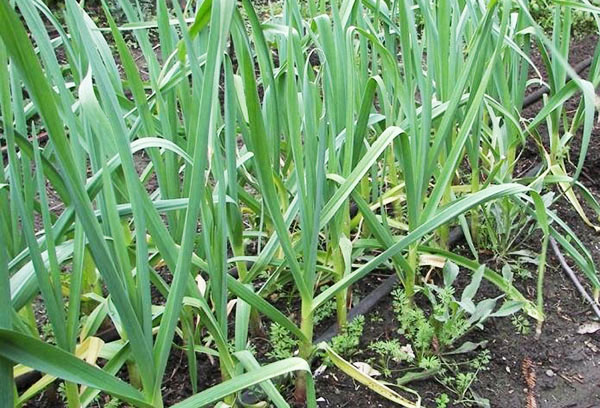
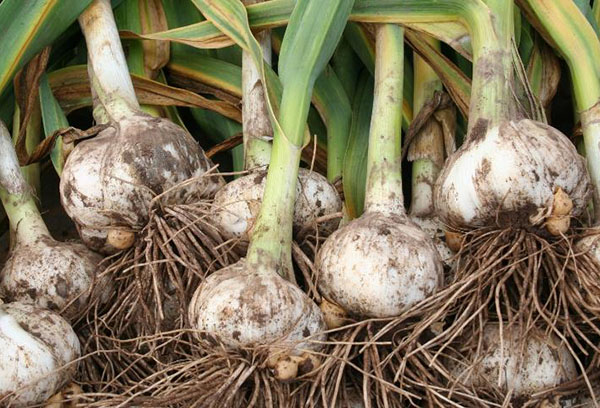
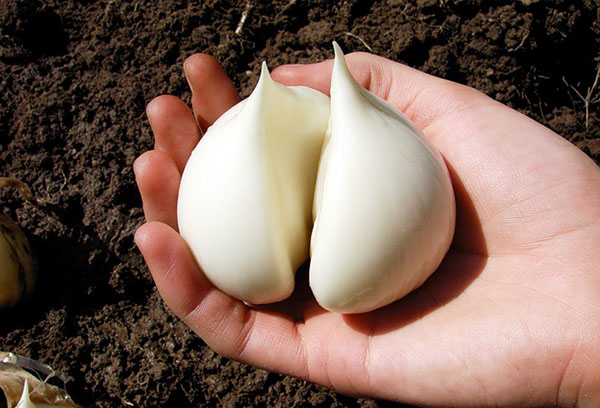
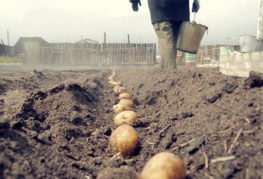
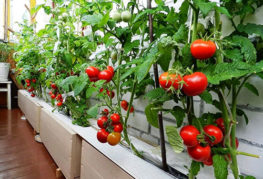
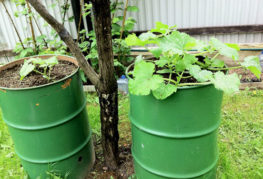
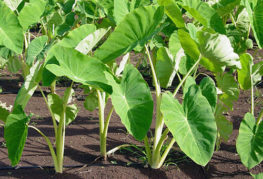


and will be published shortly.